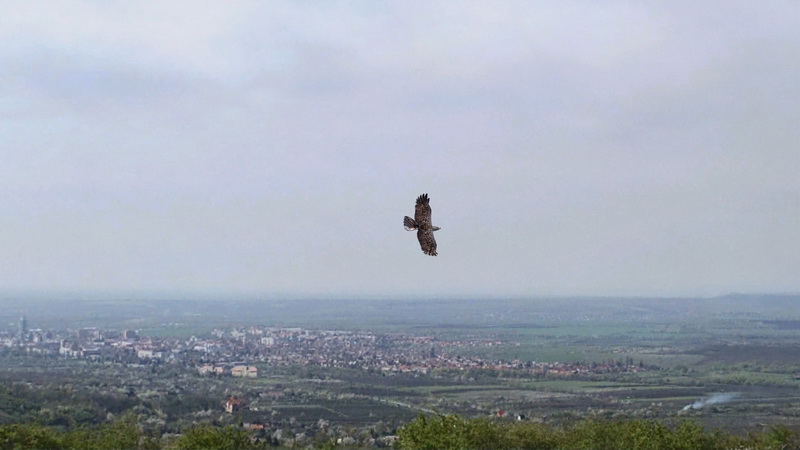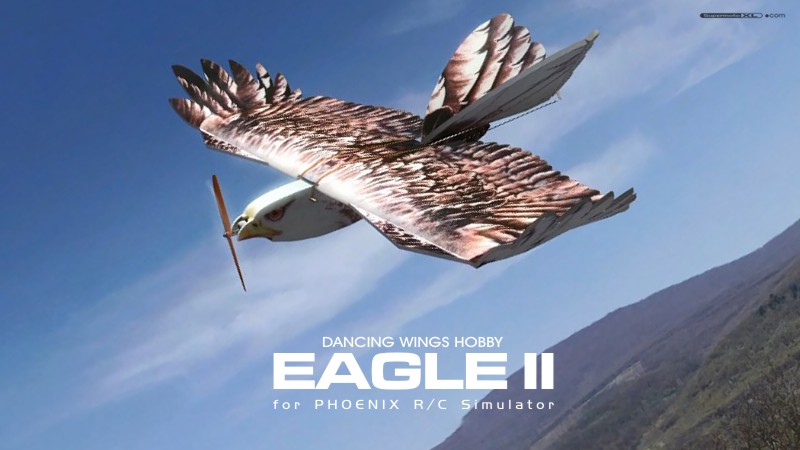
About
We're back again....in an unfortunate global situation just like last year! 2020 was not the end of Covid-19 pandemic episode, this year in 2021 we're back into home lockdown mode after another wave of new pandemic variant coming in hot. Too much sad news around the globe this year both humanity and economy, unfortunately i don't expect anything 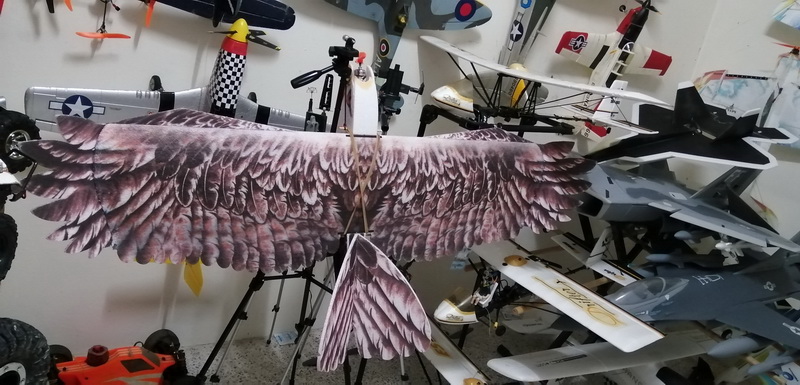 positive for next year 2022 either. Those news of pandemic fatality on digital media really scary too, on statistic its triple than last year count!. So orders to work at home is enforced and no roaming around in the public for few weeks at the time of writings. Yet i'm still craving to fly some of my favorite R/C plane, hanging around in the open soaring my R/C gliders around in winds while enjoying the beautiful backdrops of the blue horizon gave me nice soothing vibe in me. Yeah i really missed those daily doses of flying especially with my DWHOBBY (E19) Eagle II glider! Its a great glider on relaxing days. If you've missed all about this glider you can read my review on it at this link (Model review: DANCING WINGS HOBBY - Eagle II 1430mm ). Instead of complaining not able to fly outdoor during pandemic lockdown i've decided to stay positive and do something about it by just enjoying my hobby at home to keep things lit. I can settle flying virtually so i've decided created a 'virtual' version of EAGLE II glider and put it on simulator so i could get more air time on simulated environment. So i warm up my 3d modeling programs and Phoenix Builder tools to start my "stay at home and be safe" projects. Let's get going!
positive for next year 2022 either. Those news of pandemic fatality on digital media really scary too, on statistic its triple than last year count!. So orders to work at home is enforced and no roaming around in the public for few weeks at the time of writings. Yet i'm still craving to fly some of my favorite R/C plane, hanging around in the open soaring my R/C gliders around in winds while enjoying the beautiful backdrops of the blue horizon gave me nice soothing vibe in me. Yeah i really missed those daily doses of flying especially with my DWHOBBY (E19) Eagle II glider! Its a great glider on relaxing days. If you've missed all about this glider you can read my review on it at this link (Model review: DANCING WINGS HOBBY - Eagle II 1430mm ). Instead of complaining not able to fly outdoor during pandemic lockdown i've decided to stay positive and do something about it by just enjoying my hobby at home to keep things lit. I can settle flying virtually so i've decided created a 'virtual' version of EAGLE II glider and put it on simulator so i could get more air time on simulated environment. So i warm up my 3d modeling programs and Phoenix Builder tools to start my "stay at home and be safe" projects. Let's get going!
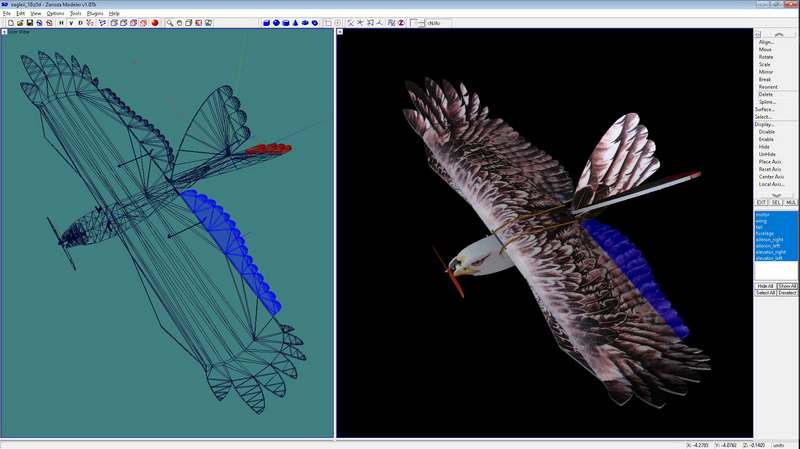
The build
Fortunately since i have the actual model in hand including 2nd bare kit as spare backups its easy for me to take high resolution photos on all corners of EPP foam surfaces and parts around the EAGLE II model for 'Orthographic' layout during 3d modeling. Since the Eagle II physical construction was made in such a flat boxy like 'profile' foam 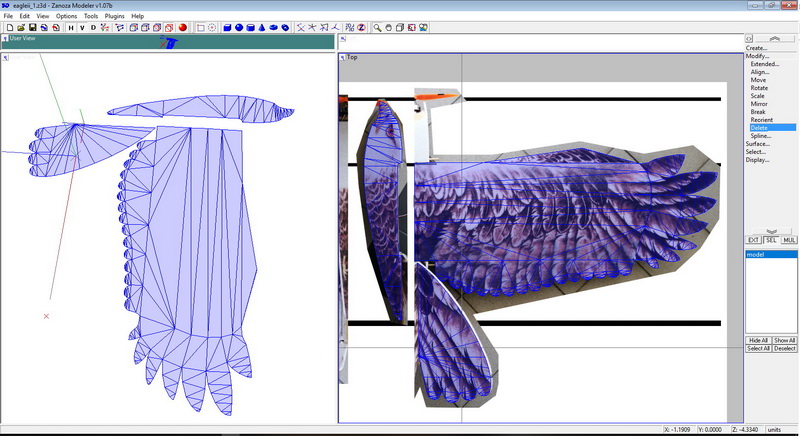 structure its very easy to modeled on to the 3d work canvas since it has less curves of 3d meshes to deal with. That means it has extremely lower amount of polycounts for entire build......that's a good number especially if the model runs on slower spec computer. There are minor little parts to work at such as assemblies motor parts, prop, servo's push rods and little tabs for rubber band for wing mounting and that's it, piece of cake!. Expected i could finished the complete flyable build under 12 hours or half day.
structure its very easy to modeled on to the 3d work canvas since it has less curves of 3d meshes to deal with. That means it has extremely lower amount of polycounts for entire build......that's a good number especially if the model runs on slower spec computer. There are minor little parts to work at such as assemblies motor parts, prop, servo's push rods and little tabs for rubber band for wing mounting and that's it, piece of cake!. Expected i could finished the complete flyable build under 12 hours or half day.
The process of building from first step to last was straight forward just like how i did with other models in the past; first create an 'Orthographic' layout on 3D canvas to get actually outline of the model dimension. Then draw flat 2D vertices on the layout. Next B-leveled to created box profile of the objects and start the assembly of the eagle model like folding an origami craft. Final 3d creation will be on minor meshes such as creating motor parts from cylindrical objects meshes, servo pushrods and etc. 2nd layer of 3d meshes will be a low poly model of the eagle for 'invisible' model collision use (something that looks like LOD model 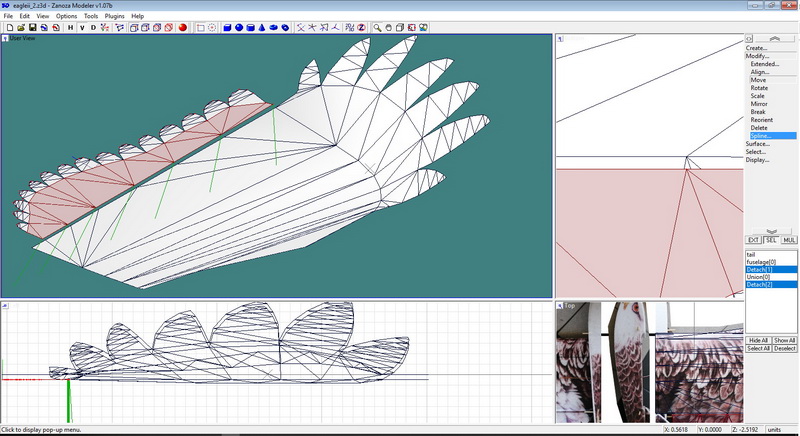 but for collision detection use). Upon completion the total worth of 3d meshes are; Vertices: 4877 and Faces: 4942 which all already include with collision (col_*) meshes, i consider that to be a good number of polygons for GPU friendly rendering inside the simulator later.
but for collision detection use). Upon completion the total worth of 3d meshes are; Vertices: 4877 and Faces: 4942 which all already include with collision (col_*) meshes, i consider that to be a good number of polygons for GPU friendly rendering inside the simulator later.
Next second phase will be some texturing works. Snapshots photo taken on all corners and surfaces of the actual models came out clean and in high resolution. Thankfully no surfaces on the EPP form was scratches or creased after daily flight at the beach for over a year now so less work to patch up any visual damages. Individual textured parts such as wing, tail, fuselage and etc was cut out and align on a 2048x2048 resolution UV texture template. The only thing to do on my Photoshop works was to cover up visible unwanted overlay during photo capturing such as servo pushrods linkages and off-set wooden wing mount pole needed to hide away from the texture. Once done the UV Mapping moved on to wrapping the texture on blank 3D meshes of the EAGLE II parts. Next the completed Eagle II meshes will be converted to *.OBJ format.
The last phase will be working via Phoenix Builder tools where 3d model in *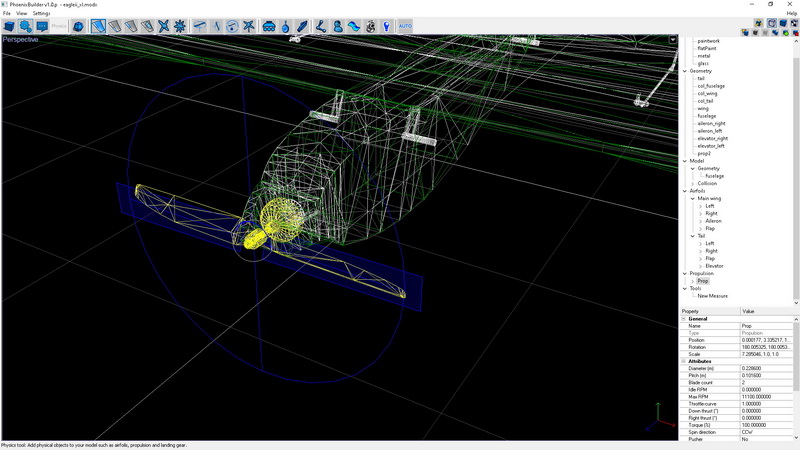 .OBJ file of Eagle II will be imported into the work scene and to be assigned with proper functional flight control surfaces and other attributes to make it works on the simulator. For this model all real life setup and specification are reflected equally in virtual format so nothing is missed. For example since i used 1000KV brushless motor on 11.1v the virtual Eagle II will have the same spec having 11,100 rpm motor on my orange GWS 9x4 DD propeller. However this phase took quite number of hours to complete since i need to work out proper tuning and trial testing the model on simulator back and forth to get actual realistic flight of EAGLE II feedbacked from my experience flying around with it outdoor. Usually the attributes such as inertial factor and aerodynamic friction will takes time to get it right until the models glides and fly exactly like the real thing in every weather condition. All i know the eagle will soar better at 20~30% throttle with adequate wind. Finally as expected i've completed the build in just within 12 hours with a good cup of coffee and some munchies. More likely i'll gain few kg of weight once the pandemic lockdown is over, lol.....at least i got my projects fruitfull during boring days!
.OBJ file of Eagle II will be imported into the work scene and to be assigned with proper functional flight control surfaces and other attributes to make it works on the simulator. For this model all real life setup and specification are reflected equally in virtual format so nothing is missed. For example since i used 1000KV brushless motor on 11.1v the virtual Eagle II will have the same spec having 11,100 rpm motor on my orange GWS 9x4 DD propeller. However this phase took quite number of hours to complete since i need to work out proper tuning and trial testing the model on simulator back and forth to get actual realistic flight of EAGLE II feedbacked from my experience flying around with it outdoor. Usually the attributes such as inertial factor and aerodynamic friction will takes time to get it right until the models glides and fly exactly like the real thing in every weather condition. All i know the eagle will soar better at 20~30% throttle with adequate wind. Finally as expected i've completed the build in just within 12 hours with a good cup of coffee and some munchies. More likely i'll gain few kg of weight once the pandemic lockdown is over, lol.....at least i got my projects fruitfull during boring days!
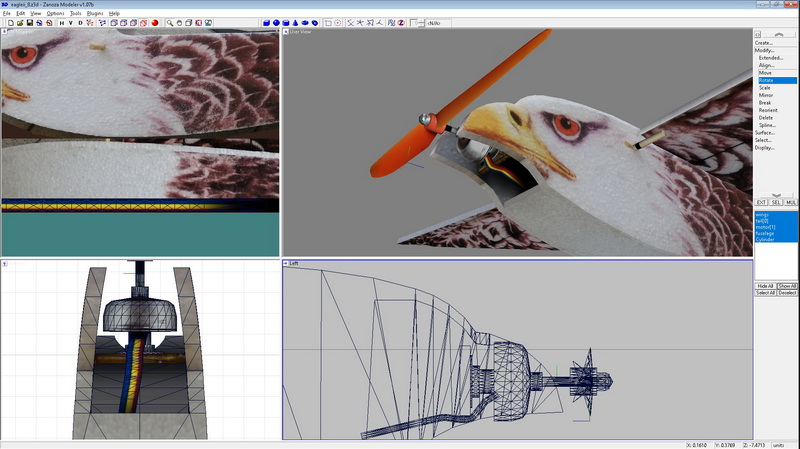
Real world 'DWHOBBY (E19) EAGLE II' glider:
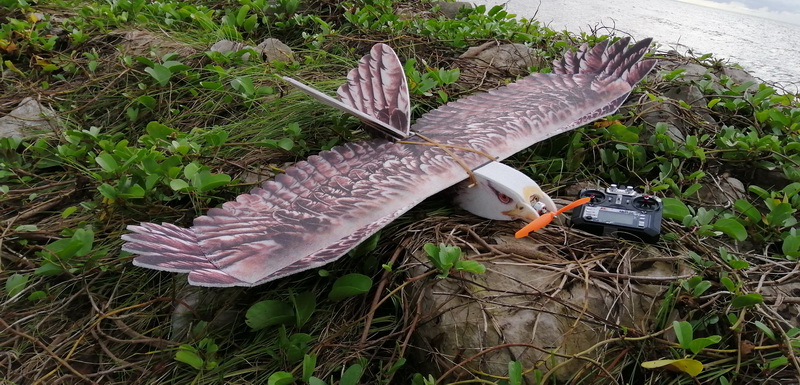
3D construction:
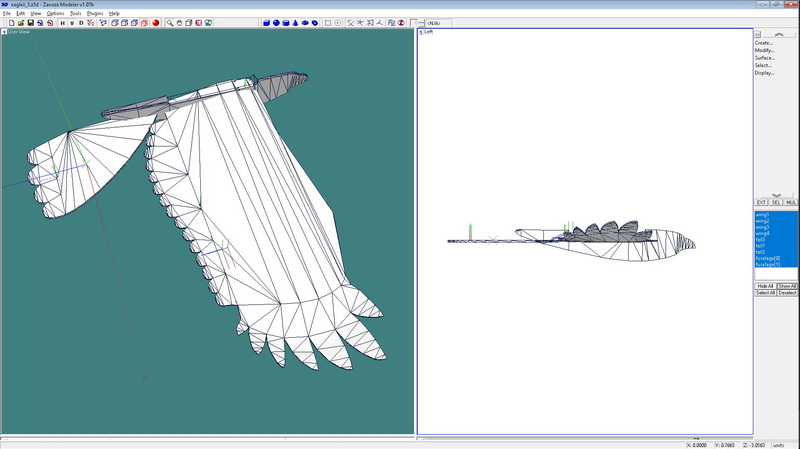
Texturing works and decaling:

Applying control surface and parameters:
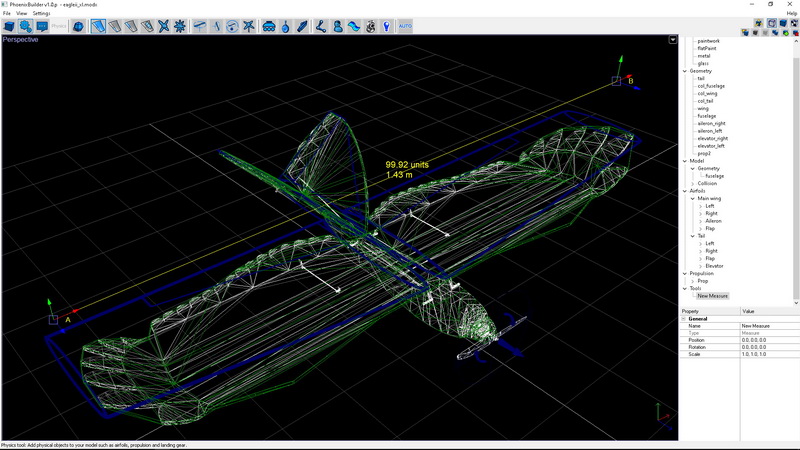
Final production in R/C Phoenix:
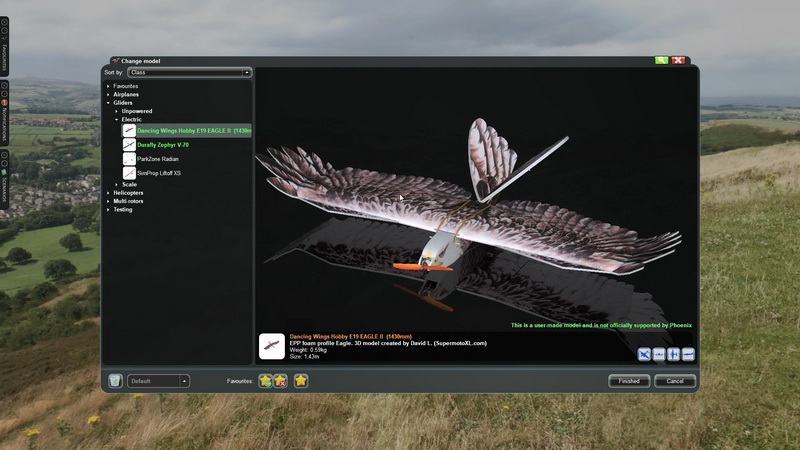
Below are the virtual stock attributes value on (E19) EAGLE II glider. The setup is actually the same as in real world as how i setup my real model from brushless motor setup, props, weight, aerodynamic, model inertia, surface friction and every attributes to make sure it flies exactly how i would feel when i flew it outdoors. I can say the flight characteristic accuracy between the actual model and virtual ones are about 95% accuracy especially when flying in 'moderate' windy setup in Phoenix R/C simulator. The model is published as 'Glider' flyer type in simulator selection menu:
- Actual wingspan: 1430mm
- Flying weight: 590g (0.59kg)
- Electric brushless: 1000kv on 11.1v lipo (11,100 rpm)
- Propeller blade count: 2x
- Main wing airfoil type: MH32
- Aileron control: Yes
- Tail surface airfoil type: Flat profile
- Tail flight control surface: Elevator (no mixing/no rudder)
- Method to Yaw or rudder turning: "Bank & Yank" control style
- Launched method: Hand launch.
- Breakable parts: main wings and tail.
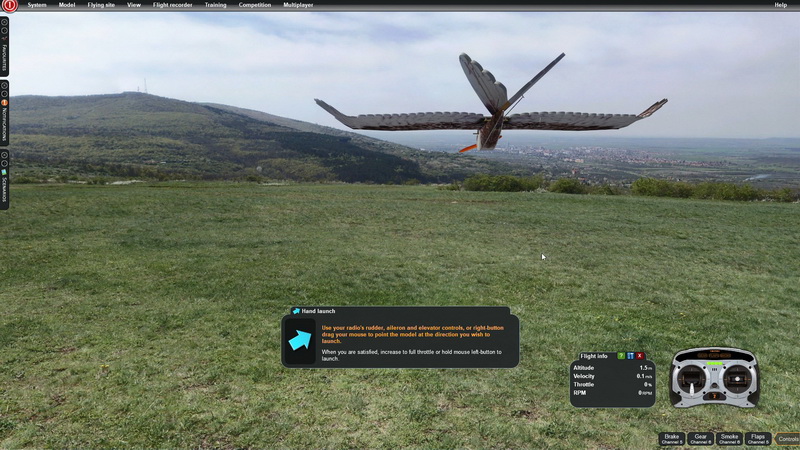
Flight characteristic
Behold! Surprise! surprise! although its runs virtually the DANCING WINGS EAGLE (E19) EAGLE II flies like the real thing with almost 95% accuracy mirrored to my actual setup similar how it felt on 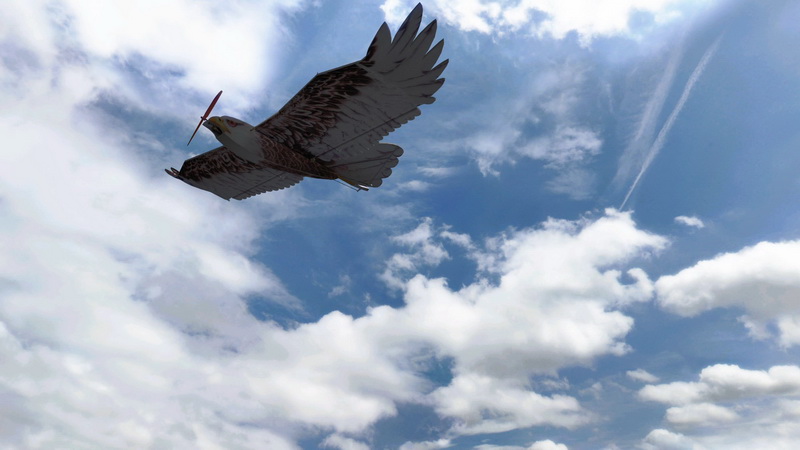 my radio stick under my thumb. The flight behavior reflect exactly like how i flew my model both low and at high altitude. The stall characteristic was also spot on too on dead calm weather. It can stall once it looses airspeed but easily recoverable. On moderately windy setting the Eagle II model seems to hold well hovering at just 20~30% throttle especially at high altitude. I must say the fun on this model comes from just gliding and soaring around at windy slope area. Relax the throttle use your skills to go hunting for wind or thermal around the slope to get a nice lift throughout the session. If you're a slope soarer enthusiast this Eagle II is a blast to fly but you'll need at least of constant at least 20% throttle to get the actual 'feel' because that's how it is on real thing. If it has a folding prop i can say it would able to just soar around endlessly unfortunately in my real setup i didn't have any other than GWS 9x4 DD prop with can be a put up bit of wind resistance acting like wind milling
my radio stick under my thumb. The flight behavior reflect exactly like how i flew my model both low and at high altitude. The stall characteristic was also spot on too on dead calm weather. It can stall once it looses airspeed but easily recoverable. On moderately windy setting the Eagle II model seems to hold well hovering at just 20~30% throttle especially at high altitude. I must say the fun on this model comes from just gliding and soaring around at windy slope area. Relax the throttle use your skills to go hunting for wind or thermal around the slope to get a nice lift throughout the session. If you're a slope soarer enthusiast this Eagle II is a blast to fly but you'll need at least of constant at least 20% throttle to get the actual 'feel' because that's how it is on real thing. If it has a folding prop i can say it would able to just soar around endlessly unfortunately in my real setup i didn't have any other than GWS 9x4 DD prop with can be a put up bit of wind resistance acting like wind milling  air-brake. The only element of fun missing in virtual world against real ones is the intimidation from mother nature; bunch bird attacking the eagle as seen on my Youtube video clips and other funny incident shown by owner of DWHOBBY EAGLE II model. Apart from that some realistic feature included on the Eagle II inside the simulator are some damage element where if it crashes hitting the ground parts of the EPP foam will breaks....which is a good point to make sure all you pilot practices safe flight before buying real ones. *Extra note; if you don't like how it flies or you wanted to fine tune and play around with extra setup on Eagle II you can access the model 'Editor' menu inside the simulator to tune things up from weight distribution, CG, motor rpm, prop size and etc. Pretty much something you would do in real thing once you get a plain kit model with hand picked electronics, servo throw setup, li-po battery positioning (CG) and etc.
air-brake. The only element of fun missing in virtual world against real ones is the intimidation from mother nature; bunch bird attacking the eagle as seen on my Youtube video clips and other funny incident shown by owner of DWHOBBY EAGLE II model. Apart from that some realistic feature included on the Eagle II inside the simulator are some damage element where if it crashes hitting the ground parts of the EPP foam will breaks....which is a good point to make sure all you pilot practices safe flight before buying real ones. *Extra note; if you don't like how it flies or you wanted to fine tune and play around with extra setup on Eagle II you can access the model 'Editor' menu inside the simulator to tune things up from weight distribution, CG, motor rpm, prop size and etc. Pretty much something you would do in real thing once you get a plain kit model with hand picked electronics, servo throw setup, li-po battery positioning (CG) and etc.
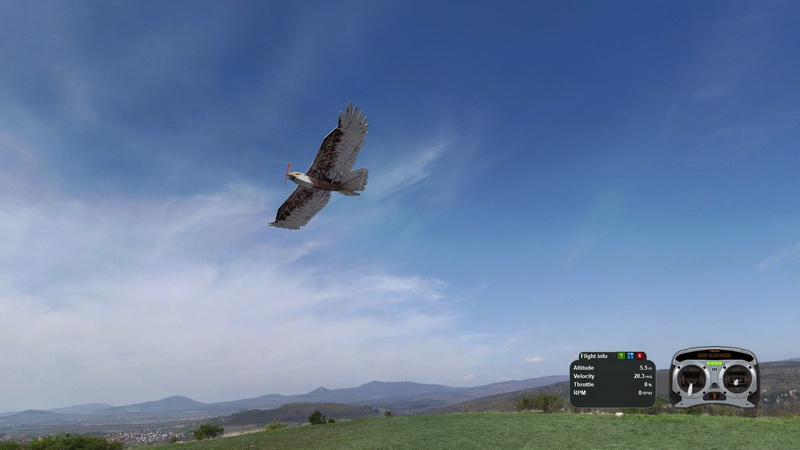
Summary
I must say i do really enjoy flying the virtual version of DWHOBBY (E19) EAGLE II virtually on Phoenix R/C simulator. It keeps me busy and entertaining while stuck between four walls all day especially during 2021 multiple wave incoming Covid-19 pandemic season. Although missing the element of real outdoor experience such 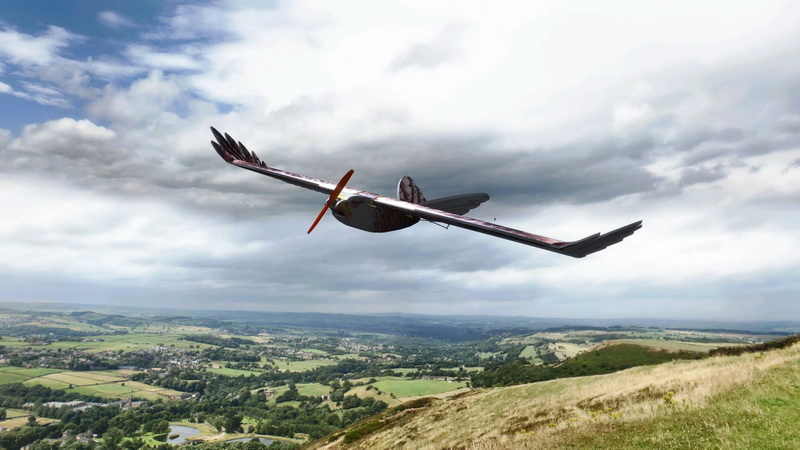 as sights, ambient sounds, smells, bird attacks and the soothing windy breeze circling my body when i fly at the beach flying virtually in simulator was enough to compensate the lost of time during home pandemic lockdown period until life returns to normal. The only thing i felt impress 'aesthetically' enjoy about the EAGLE II on simulator is once it manage to climb at high altitude at virtual flying site where the skies are clear with blue horizon on windy setting it does visually looks the same as i would flying a real thing outdoor; the slow gliding movement, the shadowy silhouette as the sun rays cast behind the models and the low power glide movement really make me feel i was there on real grounds. "Oh look an eagle!!!". Was artificial but felt real!...well 95% close to real thing. It can be a bit addicting flying inside the Eagle II simulator, i do lost myself in time and space..hard to snap myself out of it, lol! On the beneficial side if you're new to this model and planning to get the DWHOBBY (E19) EAGLE II kit you should try fly one virtually to get the 'feel' of this model before pickup up the actual kit without fear of crashing. Enjoy!
as sights, ambient sounds, smells, bird attacks and the soothing windy breeze circling my body when i fly at the beach flying virtually in simulator was enough to compensate the lost of time during home pandemic lockdown period until life returns to normal. The only thing i felt impress 'aesthetically' enjoy about the EAGLE II on simulator is once it manage to climb at high altitude at virtual flying site where the skies are clear with blue horizon on windy setting it does visually looks the same as i would flying a real thing outdoor; the slow gliding movement, the shadowy silhouette as the sun rays cast behind the models and the low power glide movement really make me feel i was there on real grounds. "Oh look an eagle!!!". Was artificial but felt real!...well 95% close to real thing. It can be a bit addicting flying inside the Eagle II simulator, i do lost myself in time and space..hard to snap myself out of it, lol! On the beneficial side if you're new to this model and planning to get the DWHOBBY (E19) EAGLE II kit you should try fly one virtually to get the 'feel' of this model before pickup up the actual kit without fear of crashing. Enjoy!

Video
Tools used to create these custom model:
- 3D Modeler program: 3D Zmodeler v1.07 and v2.0 (*.OBJ support)
- Compiler tools: Phoenix Builder v1.0.p
- Texture editing program: Corel Photopaint
Related article & community
Here are list of article and links related to the above model.
- RCgroups discussion group - EPP Real Eagle from Dancing Wings Hobby (for 1430mm wingspan)
- RCgroups discussion group - Dancing Wings EPP Mini Eagle (for 1200mm wingspan)
- My model review: DANCING WINGS HOBBY - Eagle II 1430mm
General info | model: E19 EAGLE II | platform: PC | simulator version: Phoenix R/C v5.5 | type: Aircraft | class: Glider | style: Park-flier | level: Intermediate | power: Electric | Manufacturer: Dancing Wings Hobby | avg ZIP file size: 9.81MB | date released: 3-Jun-2021 | Revision: v1.0
![]() Full gallery preview |
Full gallery preview | ![]() Video preview |
Video preview | ![]() Download this Phoenix R/C model
Download this Phoenix R/C model
*Installation instruction: How to install custom models in Phoenix R/C
*Note: This models are available for free distribution and for non-commercial purposes.
*'DANCING WINGS HOBBY' & 'DWHOBBY' is trademarks and copyright of the following company © www.dwhobby.com. All Rights Reserved.
